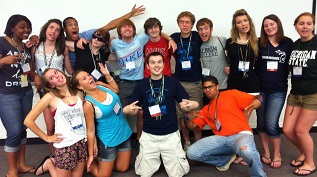Getting Back to the Basics: Lessons from Youth Giving

Confession: I thought I knew everything there was to know about youth in philanthropy.
So, when I was given the opportunity to interview youth grantmakers from seven different states for Foundation Center’s YouthGiving.org, I didn’t expect to learn much. After all, I already knew that youth are giving back in astronomical proportions because I participated in my community foundation’s youth advisory committee as a high school student. And, I know that charitable children often become civically engaged adults, because I’m on that path myself.
And yet, after talking with these bright and passionate young people, I was genuinely surprised at how much I had forgotten about good grantmaking. In truth, it’s been a few years since I have helped in a grantmaking cycle. However, having worked in philanthropy for nine years, these are several things that any grantmaker, young or old, should keep in mind:
Learning the value of a dollar is worth the work.
Sometimes foundations can feel—and be perceived as—out of touch with the needs and realities of their communities. By volunteering, fundraising, and demonstrating support for community initiatives—in addition to grantmaking—the members of the Teen Grantmaking Initiative in Dearborn and the Berks County Community Foundation Youth Advisory Committee stay grounded in their work and connected to the people they serve.
Good listening can provide a real needs assessment.
After listening to their peer members of the Greater Tacoma Community Foundation Youth Philanthropy Board share their personal histories and identities, the group decided to allocate funding to support LGBT homelessness prevention in their community. Open dialogues, in which participants are really listening to one another, can inspire meaningful changes and funding decisions.
Doing philanthropy doesn’t have to be a prerogative.
San Francisco is one of many communities across the United States facing displacement due to gentrification (that’s when urban development takes place in low-income areas resulting in a lack of affordable housing). Realizing this displacement would negatively impact their youth grantmakers, Building Leaders in Innovative New Giving (B.L.I.N.G.) decided to offer a nominal stipend to help offset the opportunity cost of participating in philanthropy, rather than, say, getting an afterschool job. This stipend not only helps to retain talented grantmakers, but it also contributes to their holistic empowerment.
The word basic tends to get a bad rap with millennials these days (for those who don’t know, “basic” is used colloquially to describe a taste that’s hegemonic or mainstream) but these principles are of a different kind. To use a metaphor, these strategies are like vanilla ice cream in a world of non-fat, dairy-free passionfruit frozen yogurt. And the fact that people under the age of 21 reminded me of these things stands alone as a testament to powerful insight afforded through youth participation.
No generation has a monopoly on great philanthropy. Still not convinced? Take a look at YouthGiving.org; the website is designed to tell the story of youth philanthropy programs (of which there are more than 800 worldwide!) and the funders who support them. You’ll find case studies, grants data, program information, expert perspectives, news stories, and more. And trust me, you’ll find the inspiration, resources, and practical tips you need to join the movement!
